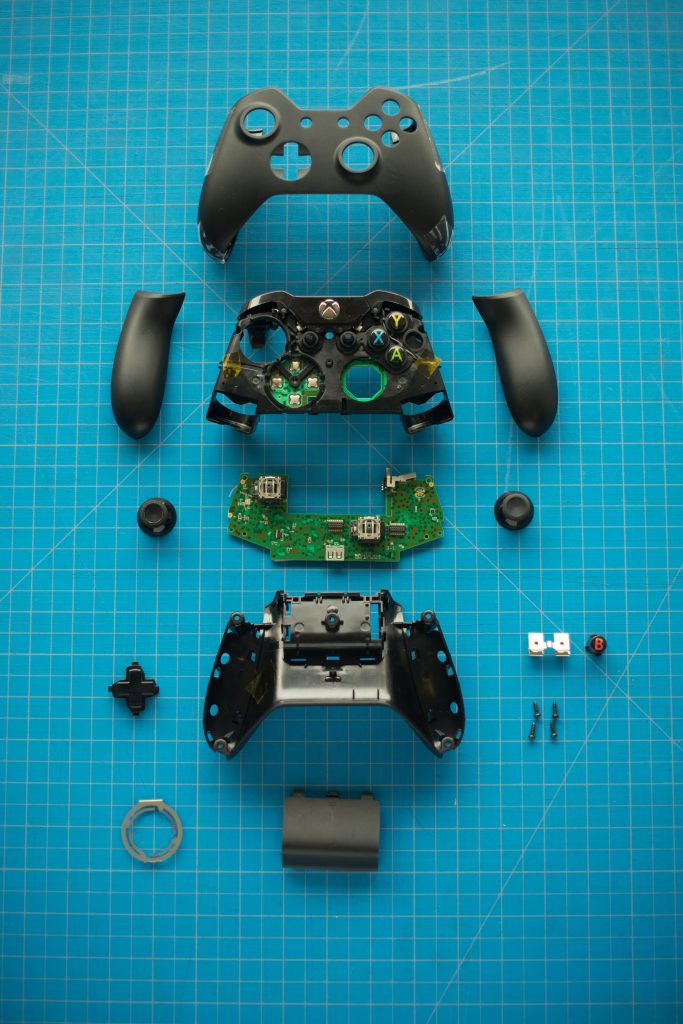
Digital games can be incredible, transformative experiences that give players the space to think and feel in entirely new ways, they can also be great little time wasters, pointless diversions and anything in between. But games also contribute to the climate crisis – from the energy used to make them, to get them into players hands, and that players use when they play them. There are ways to reduce and even eliminate some or all of these impacts.
In an ideal world, there would be a single, easy to follow guide with simple steps that any game developer or software engineer could follow without too much hassle to completely eliminate the carbon costs associated with their work or business. While there are now a few good resources (more listed at the bottom of this page) and even some very detailed guidance, many developers may not have the time or the inclination to skill up on what can be quite a complicated area.
If you find yourself in this position, unsure where to start or how to reduce your studio’s carbon emissions – get in touch and let’s discuss what we can do together. You can reach me easiest by email, by messaging me on twitter, or through LinkedIn.
What can I do about it right now?
Quite a bit! In my book I break down the emissions of the games industry into three main areas – informed by the global GHG Protocol accounting standard – that game developers have some control over: emissions from development, from distribution, and from play.
I recommend working through these three areas, and working through them in order, as they represent the emissions that developers are most responsible for. No one else can reduce your emissions for you – you’ve got to do it yourself. But it’s not as hard as it might sound.
Step 1. Development Emissions
I always recommend developers start by measuring their own emissions – first, measure the amount of fossil fuels you used (burnt) directly – for many developers, this will not be much if anything. If you have a gas powered heating system or furnace, or if you operate a fleet of internal combustion engine cars, measure how much you used. If you pay for your gas from a utility bill this might even tell you how much CO2 was emitted by your use of this much gas. For vehicles, you may be able to use the distance travelled to get a rough idea of emissions – there are several calculators online (like this one) to help you. Total these up, and these are your Scope 1 emissions according to the GHG Protocol accounting method.
There are often no easy ways to reduce these emissions other than to stop using these fossil fuels, so treat this number as a baseline and start looking into ways to avoid using these, such as by taking public transport, replacing gas with heat pumps for heating, and set a goal to eliminate these emissions by a specific date.
Next, check your power bill for the amount of power you consumed (usually in kilowatt hours, kWh) and find your region’s emissions factor (check your power company, or local government website) and multiply your power consumption in kWh with the emissions factor figure. This tells you how many tons of CO2 have been emitted to produce the power you used ( these are ‘Scope 2’ emissions – emissions someone else made for you).
To reduce these emissions numbers, you have two options – reduce the amount of power you use (not always possible) or find a power provider that offers 100% renewable (or, if none offer such a service in your area 100% offset) electricity. This might involve some research, and there may be a (usually only small) additional cost to purchase entirely carbon free power. If this is not possible to switch straight away, set a date for when you aim to do so.
As a last resort, if you cannot find an electricity provider that offers 100% renewable power, then you might consider buying carbon offsets to cover what you have used. This is a a little bit complicated, however, and it can be difficult to find a trustworthy, certified source to buy offsets from. In almost every case it will be easier to simply
Step 2. Distribution emissions and waste
There’s no getting around it – if you are selling games to players in a physical format, then those discs are almost guaranteed to be associated with a cost in both carbon and plastic waste. The majority of the world’s freight and logistics networks run on fossil fuels – from trucks, to trains, to ships and planes – and the timeline for phasing out fossil fuels in these networks is extremely far off. We are years, perhaps decades away from making this area carbon neutral, and games are lucky in that we have potential carbon neutral alternatives already.
For this reason I recommend 100% digital game sales and distribution. For many developers, this is already the case, and a no-brainer. Digital game sales are convenient for players, and for many platforms, the increasingly preferred channel for purchases. There are still some downsides to digital downloads that have yet to be addressed, with second-hand digital games sales, lending of games, as just two examples, still not widely adopted. For the sake of the planet, the future of the games industry needs to be 100% digital.
Similarly, discs and the cases that games are packaged into are made up of plastics that currently have no end-of-life resource recovery plan. Game discs that are not stored in collections will simply end up as landfill, potentially breaking down into small plastic parts, and potentially ending up in rivers, oceans and adding to the burden of the planet. Again, you can avoid this entirely by going 100% digital.
Step 3. Player emissions
Games, unlike analogue games, require electricity to play them. For the most part, most of the world’s electricity is still produced by burning fossil fuels, though this is changing – and faster than you might suspect. Until we reach 100% renewables in power grids worldwide, however, players playing our games means carbon emissions.
To achieve an estimate of the emissions from your players – these are technically Scope 3, an optional GHG reporting category and not technically emissions you are responsible for – you need some information. Collecting how long a player played for, where in the world they were when they played, and on what device they were playing, allows for a rough estimate of player emissions. Multiplying the total played time for a location in the world (usually a country) by the average power consumption of the device (in watts) will give you the watt hours for players in that location.
Divide that number by 1000 to get the kilowatt hours of power consumed, and then multiply the consumption figure with the emissions factor for the location. Repeat for each location (or country) and you will end up with a reasonable estimate of the emissions from players playing your games.
But how do we reduce these emissions? We have two options. The first is to somehow find ways to make our game more efficient – this is tricky, and a lot of hard work. This is probably a job for hardware engineers, rather than software engineers. The other option is, once again, our last resort of purchasing carbon offsets.
What else can we do?
This is an extremely simplified version of the much more longer discussion in my book Digital Games After Climate Change. A lot is left out from a guide as short as this. There are many, many other ways we can help reduce emissions and support climate action. We know that there are many gamers with a strong social conscience, and an interest in social justice. Climate issues are social justice issues, and there is much work to be done in raising the awareness among players of how much their favourite past-time costs the earth.
But that work can only happen if the games industry first cleans up its act, so it can leads by example. Switching to renewable power may not be a “sexy” solution but it is effective, and sends market signals to investors that people and business both big and small are willing to pay for it – this helps get more solar panels, and more wind farms built.
There are all sorts of pitfalls in this area, ways we can waste our time and effort for little in return, but renewable power is not one of them. The excellent research done by Joshua Aslan has concluded that, when it comes to methods of game play and distribution that are currently the most carbon efficient, the answer is, unfortunately “it depends”. However, the current ambiguity about what the lowest carbon approach currently is disappears when we reach 100% renewable power. Experts agree that electrification is one of the best pathways to complete decarbonisation.
In no particular order, here are some other actions (some small, some big) that you might also consider:
- Make the energy/emissions figures for player data visible – this may help players (and other developers) make more informed choices.
- Extend support for older hardware and help devices last longer. Any digital device has an embedded carbon cost from manufacturing. Making them last longer helps spread that cost out over time.
- Reduce your power consumption in your workplace by switching off hardware not in use, by changing lighting to energy efficient LEDs, heating and cooling to lower power modes.
- Log your flights and reduce the need to travel – some research indicates that travel emissions can as much as double a studio’s emissions.
- Market and sell the first 100% carbon neutral game – you could help develop a market for sustainably made games.
- Opt-out of the hardware upgrade cycle, photorealism, and pixel-pushing visual designs. Already approaching diminishing returns, emphasise visual style over graphical grunt.

Further Reading and Additional Resources
You can buy my book Digital Games After Climate Change direct from the publisher or via your preferred bookseller. If you can’t afford the outrageous pricing, email me and I’ll see what I can do to help you.
The team at Space Ape Games have written a fantastic guide to how they went carbon neutral which can be found here with a detailed spreadsheet of their calculations.
The UK’s trade industry body for the games industry has put out a very detailed UKIE Green Games Guide.
Joshua Aslan’s PhD thesis, which while a fairly complex and high-level engineering thesis manages to be fairly readable for the a switched-on reader, can be read online here.
The IGDA has a Climate Special interest group is in the process of producing and collecting some excellent resources on their website, and there is a very active Discord server as well.
For cloud hosting (an issue beyond the scope of this guide) Microsoft Azure Cloud Hosting offers an emissions calculator tool.
If you still have questions or want to get in touch to discuss what we can do together, here’s my email. You can also follow me on twitter, or reach out on LinkedIn.